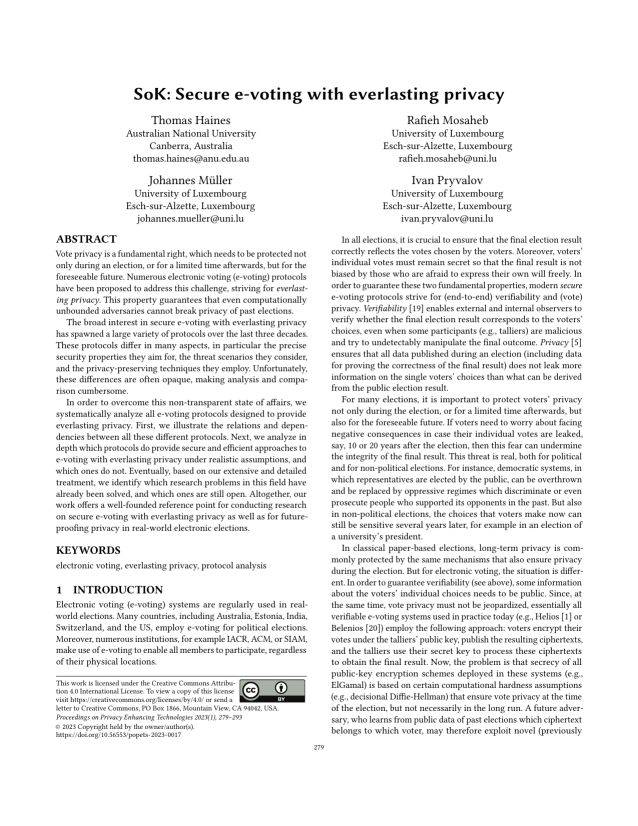SoK: Secure E-Voting with Everlasting Privacy
Authors: Thomas Haines (Australian National University), Rafieh Mosaheb (University of Luxembourg), Johannes Müller (University of Luxembourg), Ivan Pryvalov (University of Luxembourg)
Volume: 2023
Issue: 1
Pages: 279–293
DOI: https://doi.org/10.56553/popets-2023-0017
Abstract: Vote privacy is a fundamental right, which needs to be protected not only during an election, or for a limited time afterwards, but for the foreseeable future. Numerous electronic voting (e-voting) protocols have been proposed to address this challenge, striving for everlasting privacy. This property guarantees that even computationally unbounded adversaries cannot break privacy of past elections. The broad interest in secure e-voting with everlasting privacy has spawned a large variety of protocols over the last three decades. These protocols differ in many aspects, in particular the precise security properties they aim for, the threat scenarios they consider, and the privacy-preserving techniques they employ. Unfortunately, these differences are often opaque, making analysis and comparison cumbersome. In order to overcome this non-transparent state of affairs, we systematically analyze all e-voting protocols designed to provide everlasting privacy. First, we illustrate the relations and dependencies between all these different protocols. Next, we analyze in depth which protocols do provide secure and efficient approaches to e-voting with everlasting privacy under realistic assumptions, and which ones do not. Eventually, based on our extensive and detailed treatment, we identify which research problems in this field have already been solved, and which ones are still open. Altogether, our work offers a well - founded reference point for conducting research on secure e - voting with everlasting privacy as well as for future - proofing privacy in real - world electronic elections.
Keywords: electronic voting, everlasting privacy, protocol analysis
Copyright in PoPETs articles are held by their authors. This article is published under a Creative Commons Attribution 4.0 license.

